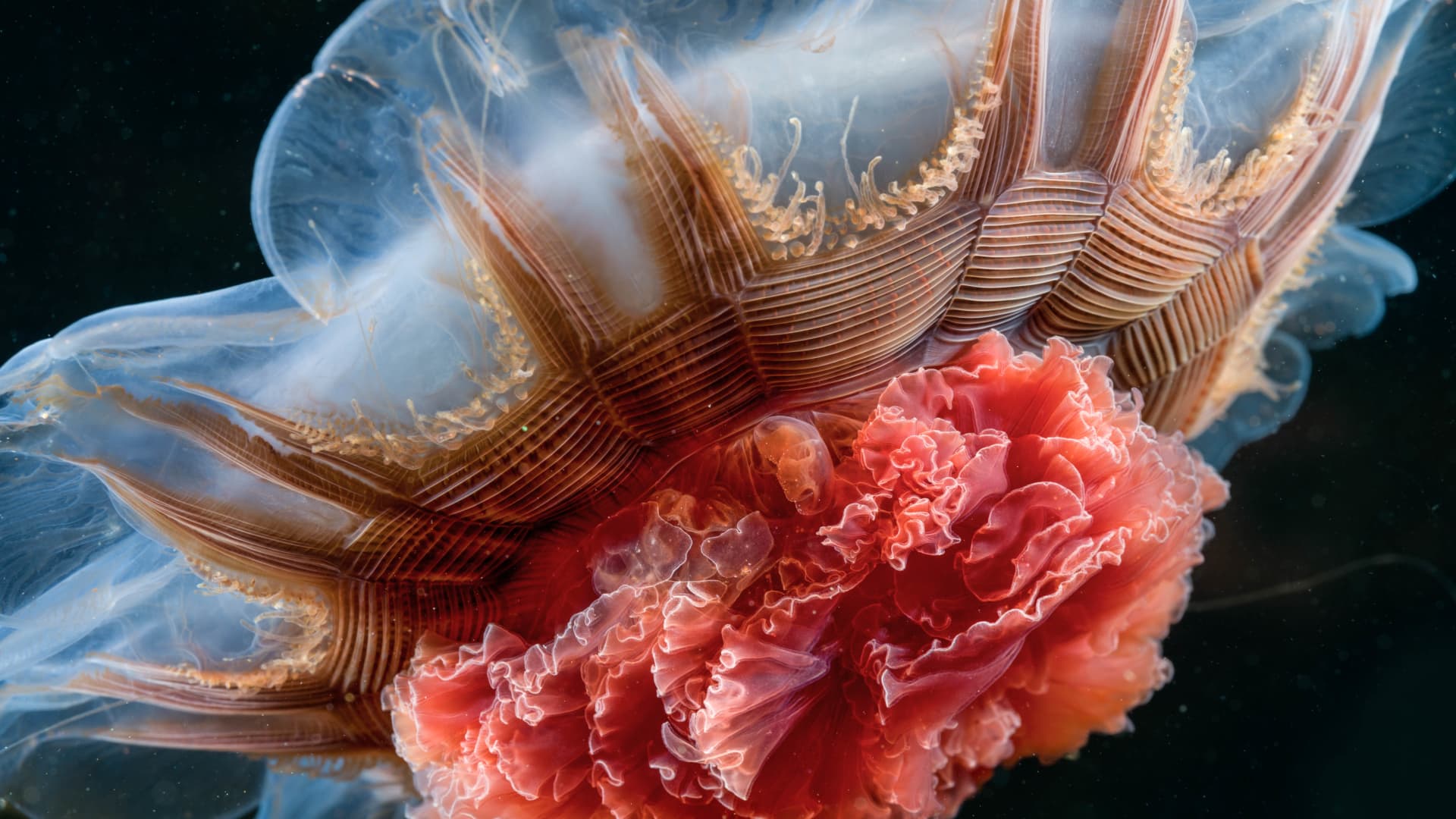Some 165 photographers working on assignment for National Geographic shot more than 2.1 million images in 2023.
Now, 29 are featured in its annual “Pictures of the Year” retrospective.
The feature — published in the magazine’s December issue and online in November — contains “stunning photographs that unearth remarkable, rarely seen moments,” according to National Geographic.
The full collection shows moments of joy and silence, celebrations of tradition and science, and the exploration of Earth and outer space.
Here are several images from that collection.
‘Fun’ but deadly
The highly prized cover photo shows a close encounter with a sea krait, a highly venomous snake, snapped by photographer Kiliii Yuyan.
CNBC Travel spoke to Yuyan about this photo, taken near the Rock Islands Southern Lagoon in Palau, an island state between the Philippines and Papua New Guinea.
“The krait is more curious than anything, often coming straight at me to investigate around me,” he said. “They are such fun, energetic and curious animals.”
Despite the risks, Yuyan said he wasn’t afraid of being bitten.
“They are extremely venomous but not aggressive,” he said. “There are lots of ways to go in this world, and death by sea snake at least gives my family a good story to tell.”
‘Incredibly hard’
Photographer Louie Palu shot this image at a military facility north of the Arctic Circle, showing Finnish and U.S. soldiers training, on skis, for winter warfare.
The training was conducted in response to Russia’s invasion of Ukraine, according to National Geographic. This photo was taken shortly before Finland joined NATO, it said. Finland became an official member of the NATO military alliance on April 4, 2023.
The United States is increasing its military winter readiness as areas of the Arctic become more strategically important, according to the national security website Defense One. Troops learn to operate in snow and mountains, and use equipment in sub-zero temperatures, it said.
In an article on Defense One, First Lt. Liam Burke said working in the cold is “incredibly hard.”
“We thought a five-kilometer movement would take us three hours,” he told Defense One. “But on skis with your gear … it took us almost double that time.”
The twilight of life
“Queen of the Arctic Seas” and “alien flower.”
Both are names that marine biologist Alexander Semenov has used to refer to the lion’s mane jellyfish, one of the largest species of jellyfish.
He photographed this one in its “final stage of life,” according to National Geographic — after it had reproduced and lost hundreds of tentacles, which are said to resemble a lion’s mane.
The jellyfish is listed as an “extreme jellyfish” on the Smithsonian’s Ocean Portal website, which states that the largest known specimen measured 120 feet from top to bottom.
A journey home
This harrowing photograph by Renan Ozturk — a former National Geographic “Adventurer of the Year” — captures a journey home.
A group of volcanologists and mountaineers are returning after weeks of exploring Mount Michael — a 2,765-foot active volcano in the Atlantic Ocean’s South Sandwich Islands.
The peak contains one of eight known lava lakes in the world, a rare geographic occurrence in which magma is held above the Earth’s surface inside a volcanic crater or depression.
A medical breakthrough
In 2019, Yale University neuroscientist Nenad Sestan discovered a way to partially resuscitate a pig’s brain hours after the pig had died.
Today, researchers at Yale use concentrated hemoglobin (in red) and a solution known as OrganEx (in blue) to restore organ functions shortly after the host has died, according to Yale. The procedure slows cell death, which researchers say could bring new hope to people awaiting organ transplants.
According to the World Health Organization, many donated organs don’t reach their intended targets in time, and thus are unused.
Isolation and memories
New Delhi-based photographer Chinky Shukla captured this nighttime photograph of Taj Mohammad standing with his sheep and goats.
Mohammad lives in rural Rajasthan in northern India. He spoke of his memories — of the ground shaking and huge clouds filling the sky — when India tested its nuclear weaponry in the nearby municipality of Pokhran in 1998.
Today India celebrates “National Technology Day” annually on May 11 to commemorate the 1998 tests.
A billion butterflies
These are not leaves on trees — they are butterflies.
Branches sag under the weight of monarch butterflies at El Rosario Sanctuary, one of many colonies in Mexico’s Monarch Butterfly Biosphere Reserve, a UNESCO World Heritage Site.
Jaime Rojo, a senior fellow at the International League of Conservation Photographers, took this photo shortly before sunset, outside of the sanctuary’s normal operating hours, according to Nat Geo.
Every year, up to a billion monarch butterflies migrate to the reserve, before departing for Eastern Canada in the spring, according to UNESCO.
“During [this] time, four successive generations are born and die,” states UNESCO. “How they find their way back … remains a mystery.”
To see all 29 photographs, visit NatGeo.com.
